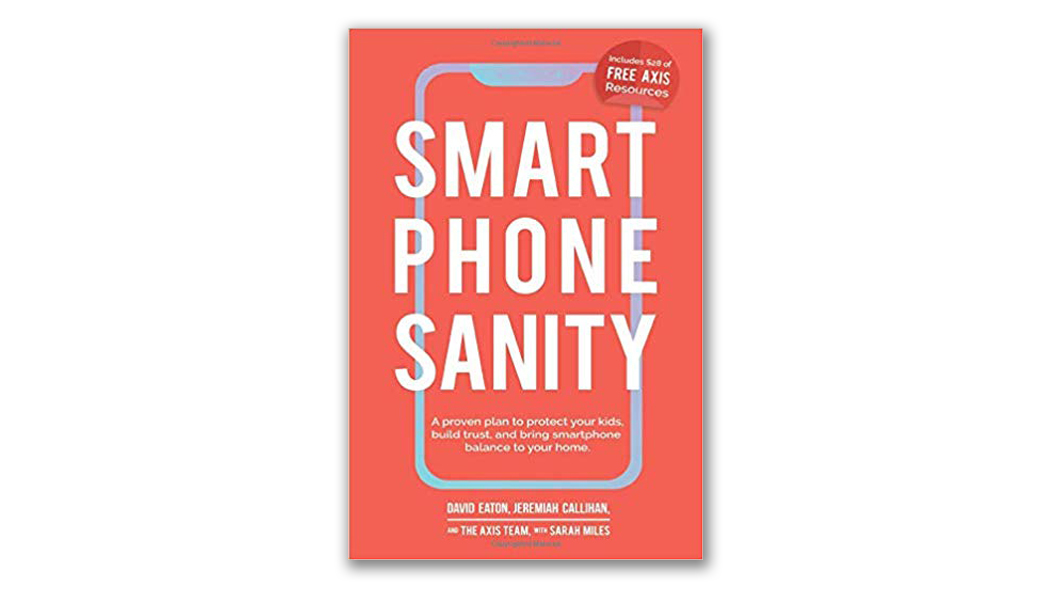Part 1 introduced the new parents’ resource Smartphone Sanity, introducing the authors and their purposes for the guide, as well as exploring some of the book. Part 2 details some of the dangers of smartphones and how this helpful book guides parents toward healthy boundaries and a family action plan.
A Pew Research Center study from 2018 reported that 95% of U.S. teens ages 13-17 said they have their own or have access to a smartphone at home. That number was up from 73% in a 2014-2015 Pew report. The 2018 survey also showed that 45% of teens said they used the internet on a smartphone or computer “almost constantly,” while 44% said they go online several times a day. YouTube, Instagram and Snapchat were the most popular online platforms for teens.
Not only are smartphones almost ubiquitous, children are getting them at younger ages. Influence Central’s “2016 Digital Trends Study” showed that the average age for getting a first phone is 10 years old and that half of all children have social media accounts by age 12. Many parents get their children smartphones so that they can track their child’s location or so that the child can easily reach mom or dad.
Still, like any useful tool, smartphones have risks and dangers, which David Eaton and Jeremiah Callihan address in their new book, Smartphone Sanity: A proven plan to protect your kids, build trust, and bring smartphone balance to your home.
The authors are cofounders of Axis, a Christian ministry to help parents understand the culture and connect with their teens. They are also winsome, funny and engaging, with great ideas for parents and families. The second section of the book lists some of the dangers of smartphones, such as over-use, pornography, sexting, video binging, excessive gaming, bullying and exposing children to dangerous and harmful ideas.
Eaton and Callihan also explore the addictive nature of smartphones. They write: “According to a study conducted by dscout, a human insight research company, the average smartphone user touches their phone 2,600+ times every day. What about extreme smartphone users? The top 10% touch their phones more than 5,400 times daily. A touch includes any time you swipe, tap, or type, and it is not the same thing as picking up your phone—which is a whole different issue altogether. You might not believe how many times you pick up your phone every day!”
The authors say that many aspects of smartphone technology are deliberately designed to be addictive, “designed to keep us hooked, with layer upon layer of social engineering baked in.” They point to a YouTube video with Tristan Harris, former Google design ethicist and co-founder of the Center for Humane Technology, who explains that modern technology is deliberately “designed to keep us engaged,” using lights, colors and events – such as app notifications – that trigger a release of dopamine in the brain.
While the authors give helpful advice for dealing with the addictive nature of smartphone technology – for both parents and children – they also go deeper and describe some of the factors that drive any kind of addiction, including loneliness and shame. Antidotes to loneliness and shame include relationship and empathy, and many of the experiences and activities in the book are designed to help families develop deeper positive emotional connections.
The third section of Smartphone Sanity helps parents create boundaries around smartphone usage for the entire family. Eaton and Callihan explain that this isn’t about imposing power and control on children, but it is an ongoing “journey of trust with a destination of independence.” They continue, “You don’t want to be checking your kid’s text messages indefinitely. You want them to be independent; to have freedom; to know the way of life and to choose to walk it.”
Families are encouraged to think and talk about eight “domains” related to smartphones. “Non-negotiables” are one domain which includes things like parental access to children’s phones and parental passcodes. It also includes no bullying, inappropriate language, pornography or sexting. Money is another area parents should think through – who pays for the phone, the plan, data, apps and accessories. The authors are clear that the phone actually belongs to the parents, and the child is just using it. Another domain is time, including curfews and limits on usage.
This section also includes valuable practical information about setting up children’s smartphones for appropriate use of texting, internet usage, apps, games and social media.
The final section is where parents implement a “Family Phone Agreement.” The goal, again, isn’t just to oversee and control a child’s phone usage, but to maintain an open relationship and to help children develop character traits that will guide them as they mature and eventually gain independence. These traits include having a strong moral compass and developing self-awareness and self-governance.
While many parents may buy Smartphone Sanity just to learn about how to set up parental controls and phone monitoring, the resource offers much more. The book is about the hearts of parents and children. Parents who thoughtfully and humbly work through even some of the exercises and activities will grow and learn. They’ll also deepen their connection with their children and nurture their children’s faith, helping them develop into healthy young adults.
More resources:






